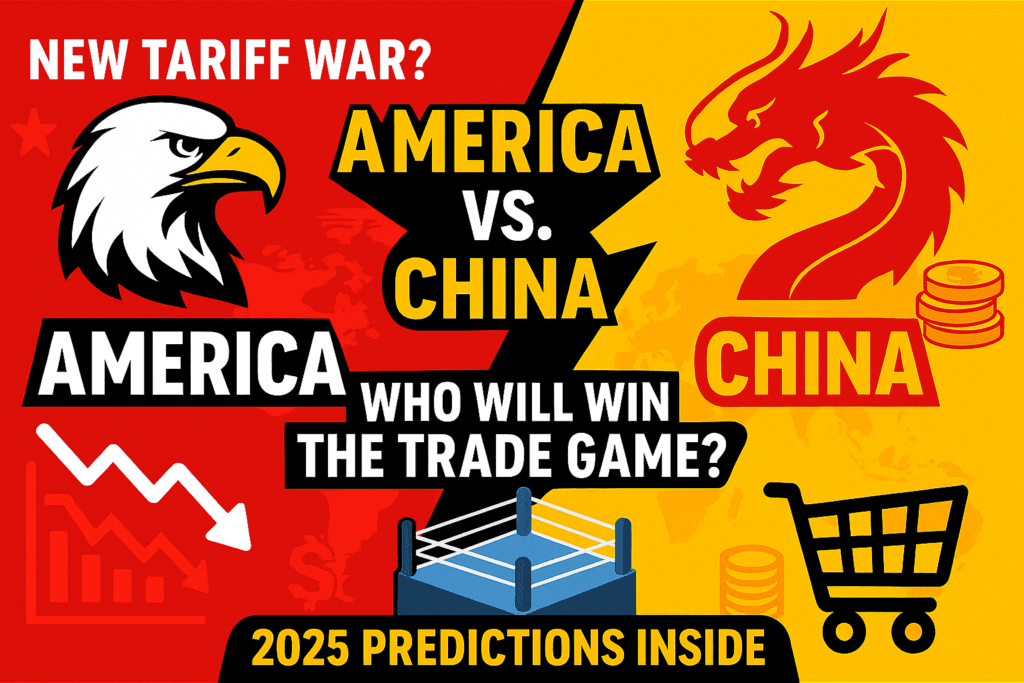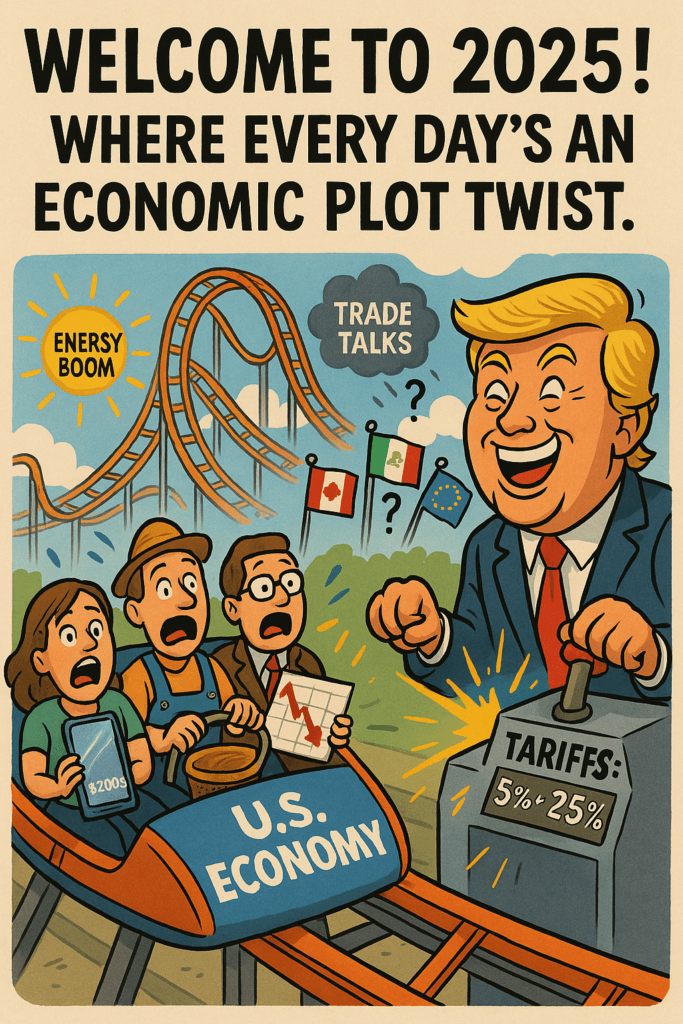Donald Trump’s 125% Tariff Shocks China: A Deep Dive into Global Trade, Markets, and Opportunities for India
Introduction to Trump’s Bold Tariff Announcement
Hello friends, I’m Harsh, and today we’re diving into a seismic shift in global trade dynamics that’s left the world buzzing. Donald Trump, never one to shy away from dramatic moves, has delivered what I’d call the most significant economic shock to China in recent history.
Late at night, in typical Trump fashion, he made a sudden declaration that has reshaped international tariffs overnight. He announced that tariffs on almost all countries, which previously ranged from 25% to 26%-including the 26% tariff on India that many of you are aware of-would be slashed to a uniform 10%. But here’s the real bombshell: China, which attempted to retaliate against U.S. tariffs by imposing its own countermeasures, now faces an astronomical 125% tariff. In effect, Trump has strategically maneuvered to exclude China from the American market almost entirely.
This move isn’t just about numbers; it’s a geopolitical statement. Trump’s action signals a clear preference for countries that align with U.S. trade policies while punishing those that don’t. For India, this is a moment of both opportunity and caution, as we’ll explore in detail. Let’s break it down step by step.

ALSO READ : Trump 50% Tariff on China 2025: Impact & Risks Explained
Why 125% Tariffs on China Matter? : A Closer Look
To understand the gravity of Trump’s decision, consider this: a 125% tariff on Chinese goods means that for every dollar’s worth of product China tries to export to the U.S., it would face an additional tariff cost of $1.25. This makes Chinese products virtually unsellable in the U.S. market, effectively barring China from one of the world’s largest consumer bases. This isn’t just an economic blow; it’s a strategic move to force global supply chains to diversify away from China.
China’s attempt to counter U.S. tariffs by targeting American exports backfired spectacularly. Trump’s response was swift and ruthless, hiking tariffs to levels that no economy can sustain. Meanwhile, the U.S. has reduced tariffs on most other countries, including India, to 10%. This relief is part of Trump’s broader strategy to reward nations that didn’t retaliate against his initial tariff hikes. India, which wisely chose not to escalate trade tensions, now finds itself in a favorable position. Our policy of maintaining low or no retaliatory tariffs on the U.S. has paid off, as Trump explicitly stated, “If you don’t retaliate, you will be rewarded.”
For India, this reduction from 26% to 10% translates to lower costs for exporters and a more level playing field in the U.S. market. However, the 125% tariff on China creates a vacuum that India and other nations must fill. This shift could boost Indian exports, but it also raises questions about how long this relief will last and whether Trump might reverse course later.
The controversy surrounding Trump’s announcement style is worth noting. His late-night, almost theatrical reveal has drawn criticism for lacking transparency and proper consultation with allies. Yet, it’s also a testament to his unpredictable leadership, which keeps markets and governments on edge.
ALSO READ : Funny Trump Cartoon Laughing Businessman Illustration – HA HA Art for Humor Lovers
Impact on Stock Markets and Investor Concerns: Unpacking the Surge
The financial markets didn’t just react—they erupted. Within hours of Trump’s announcement, the U.S. stock market surged by more than 12% in a single day, marking the largest one-day gain since the 2008 financial crisis. To put this in perspective, a 12% jump in one day is extraordinary. The S&P 500, Dow Jones, and Nasdaq all saw historic spikes, driven by investor optimism about reduced trade tensions with most countries and the exclusion of China as a competitor.
But here’s where it gets tricky for India. Our stock market, including the Nifty and Sensex, was closed on the day of the announcement, which left many investors frustrated. If it had been open, we might have seen a similar rally, with portfolios recovering and losses narrowing.
The U.S. market surge also sparked allegations of foul play. Critics, including several U.S. senators and financial experts, have accused Trump of market manipulation and insider trading. They point to a pattern: Trump tweets something cryptic-like his 9:30 a.m. post saying, “Great time to buy stocks, Donald J. Trump”-and then, within hours, makes a major policy announcement that sends markets soaring. In this case, three hours after that tweet, he revealed the tariff cuts and hikes, triggering the 12% jump.
One high-profile example involved a trader who invested $1 million (approximately ₹8.5 crore) in stock options. When the market surged, that investment ballooned to nearly ₹506 crore in profits. Such windfalls raise suspicions that Trump’s inner circle, or those with advance knowledge of his plans, cashed in big time. Senator Chris Murphy and others are calling for a formal investigation, arguing that this could be a scandal of insider trading and market manipulation. Whether these claims hold water remains to be seen, but they add another layer of complexity to Trump’s leadership style.
ALSO READ : Global Trade War Ignites – China’s 34% Tariff on U.S. Sparks Chaos!
Controversy and Trump’s Unpredictable Style: A Deeper Analysis
Trump’s approach is nothing if not polarizing. His tendency to make major announcements via Twitter or late-night press conferences, without prior warning, has become his trademark. This time, his decision to impose a 125% tariff on China while cutting tariffs for over 70 other countries has fueled debates about fairness, legality, and economic stability.
Critics argue that Trump’s actions blur the line between presidential duty and personal gain. If his inner circle profited from foreknowledge of the tariff changes, it could violate U.S. laws against insider trading. Some analysts point to historical data showing that stock market volatility spikes under Trump’s administration, often correlating with his unpredictable policy shifts. For instance, during his first term, similar tariff announcements caused market swings of 5% to 10%, but nothing on the scale of this 12% surge.
On the flip side, Trump’s supporters argue that his bold moves are necessary to reshape global trade in America’s favor. They see the 125% tariff on China as a long-overdue response to decades of unfair trade practices, intellectual property theft, and market manipulation by Beijing.
For global investors, the lesson is clear: the next four years will be a rollercoaster. A joke circulating on Twitter captures this sentiment perfectly. An American user quipped that people called Joe Biden “Sleepy Joe” because his presidency was predictable and calm-no sudden midnight tweets or market shocks. Under Trump, however, investors must brace for anything: a 10% market drop one day, a 15% surge the next, all triggered by a single tweet or policy shift. If you’re investing in markets, buckle up-it’s going to be entertaining but tense.
Opportunities for India: Seizing the Moment
For India, Trump’s tariff moves present a golden opportunity, but it comes with risks. The reduction of U.S. tariffs on Indian goods from 26% to 10% lowers export costs and opens doors to the American market. This is especially significant for sectors like textiles, pharmaceuticals, IT services, and manufacturing, which have long faced barriers in the U.S.
Prime Minister Narendra Modi and Indian policymakers now have a chance to capitalize on this shift. The government should roll out incentive packages, subsidies, and policy reforms to help Indian companies scale up production, improve quality, and capture market share in the U.S. For example, sectors like electronics and auto components could see a boom if companies invest in innovation and efficiency.
There’s also the potential for a major supply chain shift. Companies like Apple, which still have some production in China, might accelerate plans to move operations to India. Vietnam is another contender, but its smaller market size and political risks make India a more attractive long-term option. As a neutral observer, I’d argue that India’s stable governance, large workforce, and growing infrastructure make it the best choice for manufacturers looking to diversify away from China.
However, this opportunity isn’t guaranteed. Trump’s tariff relief is only for 90 days, after which he’ll reevaluate. He might demand concessions from India, such as lower tariffs on U.S. agricultural products or increased market access for American firms. While Trump has historically used a softer tone toward India-praising Modi and highlighting the strong bilateral relationship-geopolitics can shift quickly. Indian businesses and policymakers must act fast to lock in these gains.
Risks of China’s Response: What Lies Ahead
China’s exclusion from the U.S. market won’t be taken lightly. Facing 125% tariffs, Beijing has few options. One likely strategy is “dumping”-flooding other markets, including India, Japan, Russia, and Australia, with cheap goods to offset lost U.S. revenue. This could hurt Indian industries, particularly steel, chemicals, and electronics, where Chinese products dominate.
To counter this, India may need to impose anti-dumping duties, a move that could escalate tensions. China has already filed complaints with the World Trade Organization (WTO), arguing that Trump’s tariffs violate global trade rules. This could lead to a protracted legal battle, further complicating international relations.
There’s also a geopolitical risk. With its economy under pressure and its global influence waning, China might take aggressive actions, such as military posturing toward Taiwan or increased assertiveness in the South China Sea. Xi Jinping is likely frustrated and cornered, and desperate leaders sometimes make bold moves. The next three months will be critical, with potential developments in trade, diplomacy, and even security.
Conclusion: Stay Prepared for What’s Next
Thanks for sticking with me through this detailed analysis! The world of trade, markets, and geopolitics is more unpredictable than ever, but it also offers incredible opportunities-especially for India.



